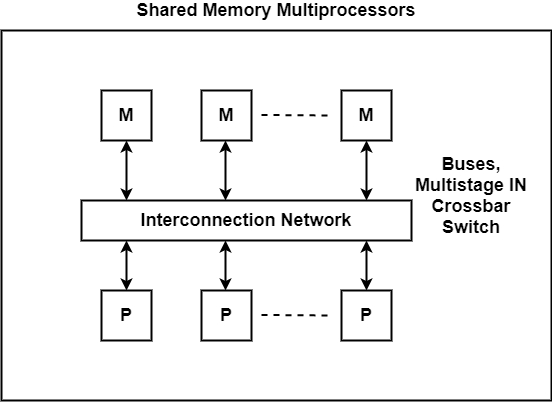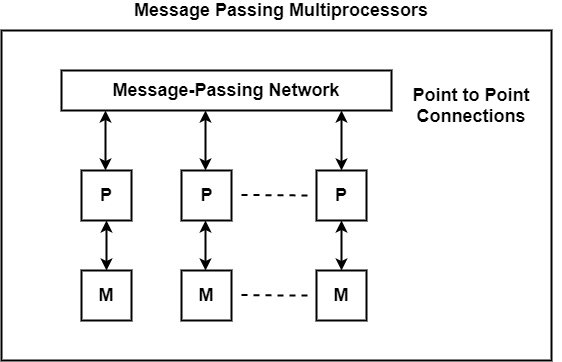
 Data Structure
Data Structure Networking
Networking RDBMS
RDBMS Operating System
Operating System Java
Java MS Excel
MS Excel iOS
iOS HTML
HTML CSS
CSS Android
Android Python
Python C Programming
C Programming C++
C++ C#
C# MongoDB
MongoDB MySQL
MySQL Javascript
Javascript PHP
PHPPhysics
Chemistry
Biology
Mathematics
English
Economics
Psychology
Social Studies
Fashion Studies
Legal Studies
- Selected Reading
- UPSC IAS Exams Notes
- Developer's Best Practices
- Questions and Answers
- Effective Resume Writing
- HR Interview Questions
- Computer Glossary
- Who is Who
Difference between Shared Memory Multiprocessors and Message-Passing Multiprocessors in Computer Architecture.
Shared Memory Multiprocessors
In shared-memory multiprocessors, numerous processors are accessing one or more shared memory modules. The processors may be physically connected to the memory modules in many ways, but logically every processor is connected to every memory module.
One of the major characteristics of shared memory multiprocessors is that all processors have equally direct access to one large memory address space. The limitation of shared memory multiprocessors is memory access latency.
The figure shows shared-memory multiprocessors.

Shared memory multiprocessors have a major benefit over other multiprocessors since all the processors sent a similar view of the memory.
These processors are also termed Uniform Memory Access (UMA) systems. This term denotes that memory is equally accessible to every processor, providing access at the same performance rate.
Message-Passing Multiprocessors
In a message-passing multiprocessor system, a method for conveying messages between nodes, and a node and a method, to format the same in a message-passing computer system is specified. A network interface is an example of the message-passing multiprocessor system. In the network interface for a computer system, there exists −
- Multiple nodes are linked with one another through an interconnection network for the communication of messages.
- More than one processor and local shared memory are linked with one another through a node bus.
The figure shows message-passing multiprocessors.

Some of the important characteristics of message-passing multiprocessors are −
- Computers are interconnected.
- All processors have their memory and they communicate through message -passing.

